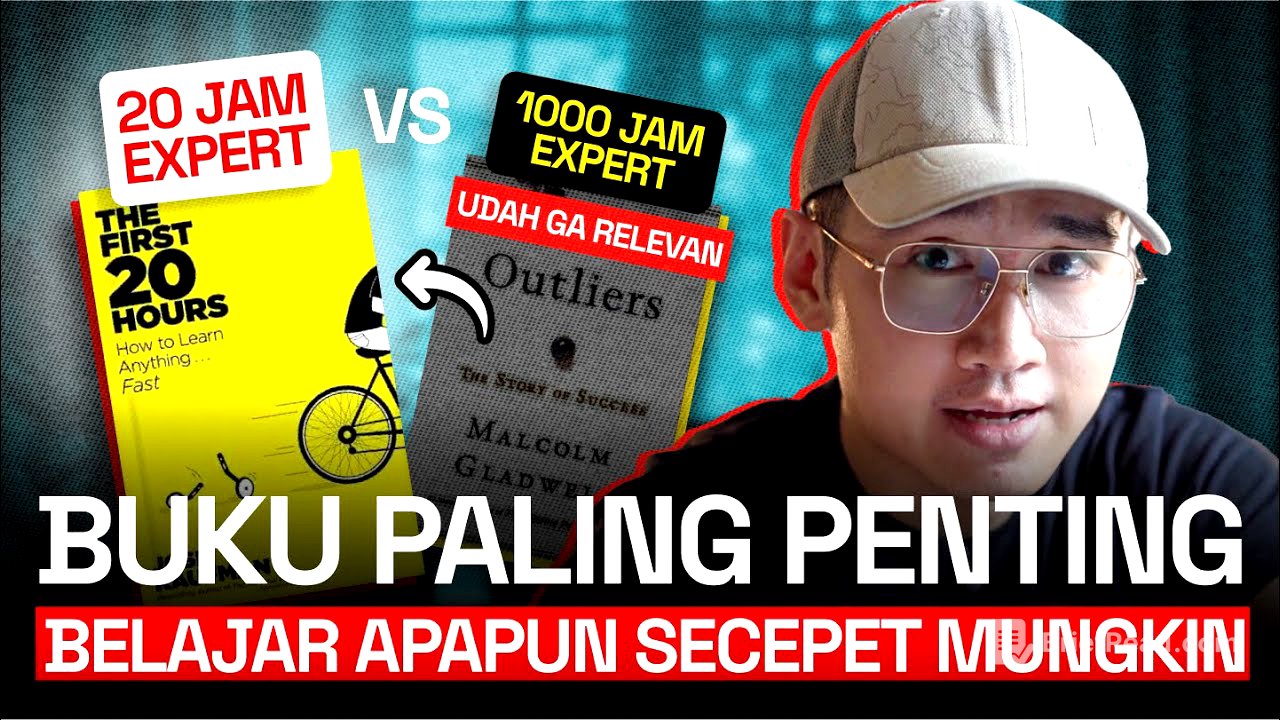TLDR;
This video emphasizes the critical importance of rapid skill acquisition in today's fast-changing job market. It challenges the traditional 10,000-hour rule and introduces a framework based on the book "The First 20 Hours" by Josh Kaufman, advocating for a more efficient approach to learning. The key is to focus on deliberate practice and intelligent learning, which can lead to significant results in a much shorter time.
- The traditional 10,000-hour rule for mastering a skill is challenged.
- Rapid skill acquisition involves learning efficiently to achieve maximum results in minimal time.
- Four steps to learn any skill quickly: deconstruct the skill, learn enough to self-correct, remove practice barriers, and practice for at least 20 hours.
Chapter 0 - 2030 Ga Upgrade Skill = Pengangguran [0:00]
The video starts by highlighting the urgency of upskilling and reskilling due to the rapidly changing job market. Predictions suggest significant job losses and skill obsolescence by 2030, with 59% of people potentially lacking relevant skills. The World Economic Forum estimates that 1 billion people need to upgrade their skills to remain competitive against robots and AI. The traditional notion of needing 10,000 hours to master a skill is challenged as impractical in this fast-paced environment. The video introduces Josh Kaufman's "The First 20 Hours," which suggests that significant results can be achieved with just 20 hours of intelligent practice, making it a more relevant approach for quickly adapting to new demands.
Chapter 1 - Rapid Skill Acquisition [3:44]
Josh Kaufman, a former corporate employee, developed the concept of rapid skill acquisition out of frustration with the slow pace of traditional learning methods. Rapid skill acquisition focuses on learning with minimum time and maximum results, emphasizing efficiency rather than shortcuts. The core principle is to avoid wasting time by diving into comprehensive, expert-level learning from the start. Instead, the video suggests that committing to just the first 20 hours of focused practice can yield significant progress and make learning more automatic by overcoming initial frustrations.
Chapter 2 - 4 Langkah buat Jago Dalam 20 Jam [4:47]
The video outlines four steps for rapid skill acquisition: deconstruct the skill, learn enough to self-correct, remove practice barriers, and practice for at least 20 hours. These steps provide a structured approach to learning any new skill efficiently. The following sections will describe each step in detail.
Step 1 - Deconstruct The Skill [5:09]
The first step involves breaking down a large skill into smaller, more manageable components. Instead of trying to master all aspects at once, focus on identifying the core parts that yield the biggest results. For example, when learning a language, prioritize conversational skills over reading numbers if the goal is to have basic conversations. Similarly, when learning the ukulele, focus on the four major chords (C, G, A, and F) that allow you to play hundreds of pop songs quickly. This approach is supported by cognitive load theory, which suggests that the brain absorbs information more effectively when it is simplified and divided into smaller components. AI tools can be used to help break down skills and create a roadmap tailored to specific goals and timelines.
Step 2 - Learn Enough to Self-Correct [7:43]
After deconstructing the skill, the next step is to learn just enough theory to start practicing and self-correcting. This approach challenges the traditional method of mastering all the theory before practicing. Immediate practice allows you to identify and correct mistakes, making learning more effective. Research shows that practicing and self-evaluating leads to 75% information retention, compared to only 10% from reading. This "just in time learning" approach involves learning what you need when you need it, rather than trying to learn everything upfront.
Step 3 - Remove Practice Barrier [9:37]
Removing barriers involves creating an environment conducive to focused practice. This includes setting aside specific times and places for studying and eliminating distractions like cell phones. Consistency in study habits programs the body and brain to focus, improving the quality and effectiveness of learning. Consistent, focused practice, even for just one hour a day, yields better results than sporadic, intense study sessions.
Step 4 - Practice at Least 20 Hours [10:41]
The final step is committing to at least 20 hours of deliberate practice. This initial commitment is crucial for overcoming the emotional barrier of feeling frustrated or awkward when learning something new. After the first 20 hours, the learning process becomes more natural and easier to sustain. The video also highlights the benefits of using business management software like ODO to streamline operations, allowing entrepreneurs to focus on learning new skills. ODO offers modular systems suitable for businesses of all sizes, with localized features for Indonesian businesses.
Chapter 3 - Kesimpulan [13:43]
The video concludes by emphasizing the importance of rapid skill acquisition in a market that increasingly values efficiency and adaptability. Companies are more likely to prioritize employees who can quickly learn new skills over those with outdated expertise. Overcoming the emotional barrier to learning and adopting a structured approach, as outlined in the four steps, is essential for staying competitive. The video reiterates that AI can be a valuable tool for breaking down skills, scheduling practice, and providing learning materials. Ultimately, the ability to learn quickly is more valuable than possessing skills that are becoming obsolete.
